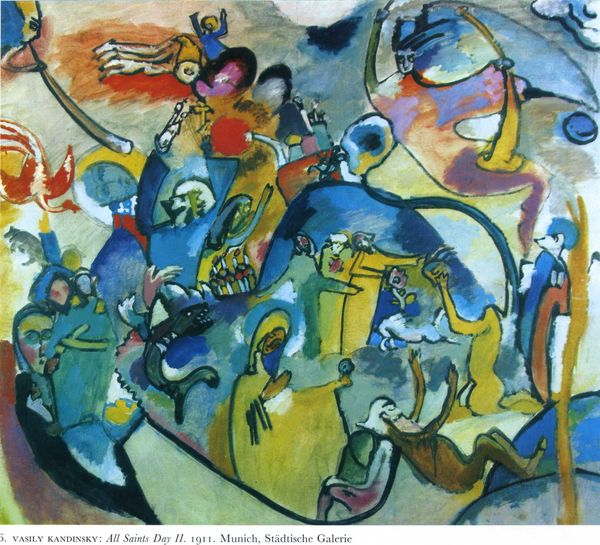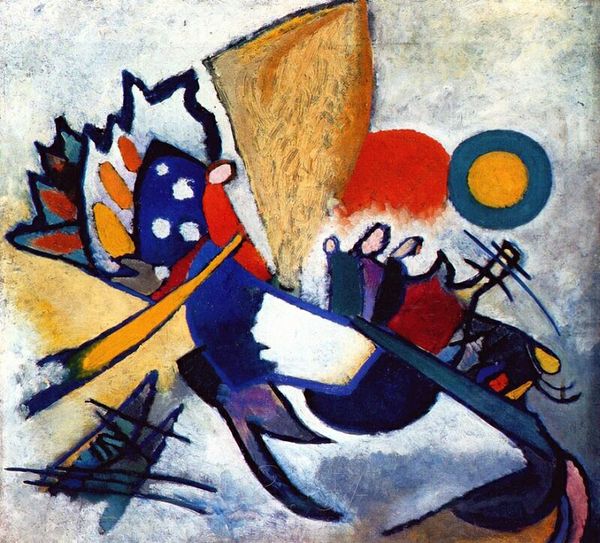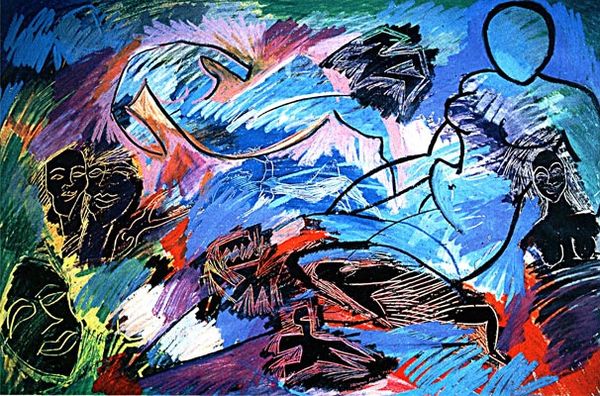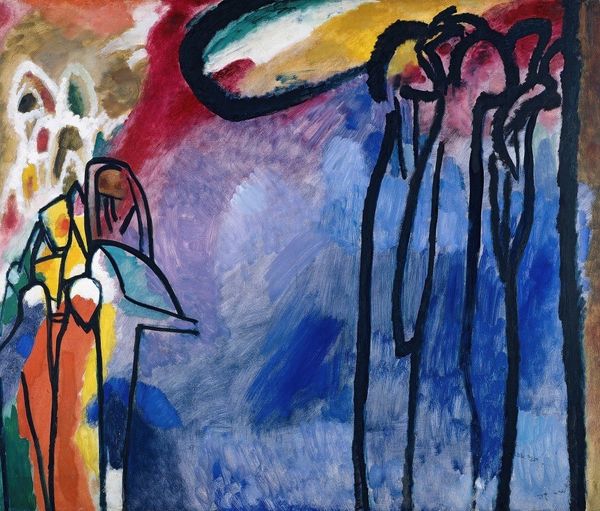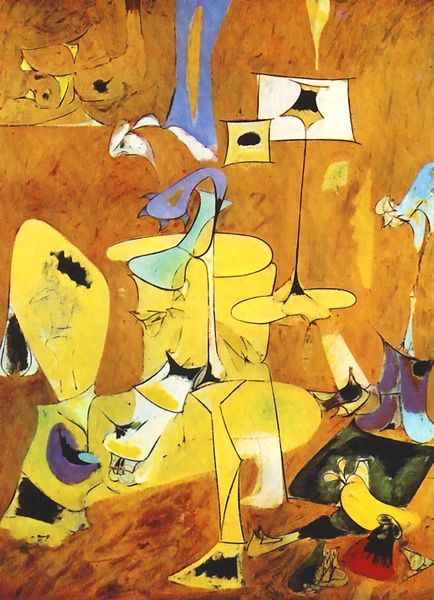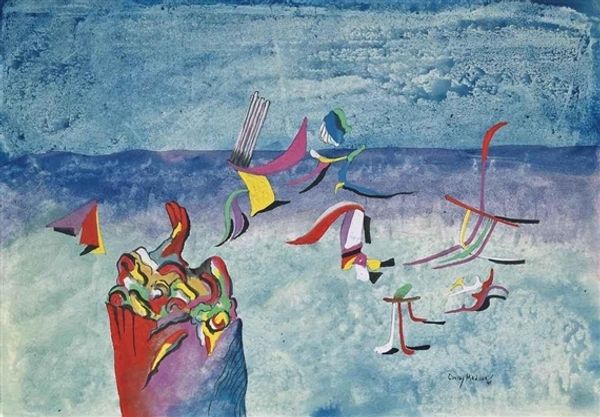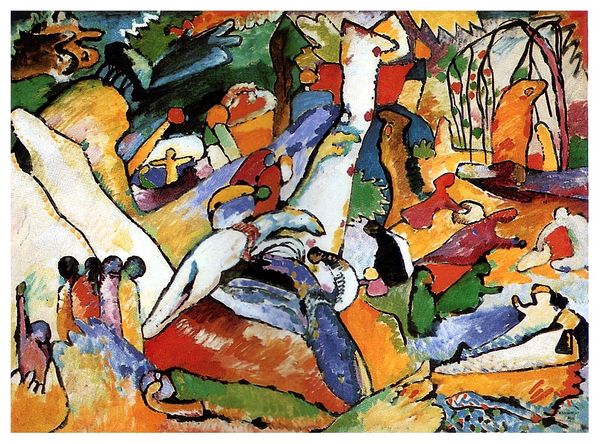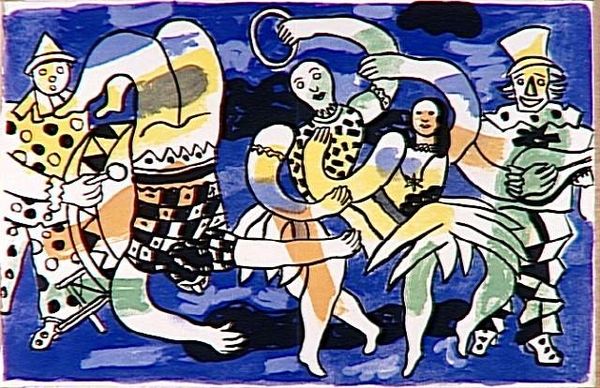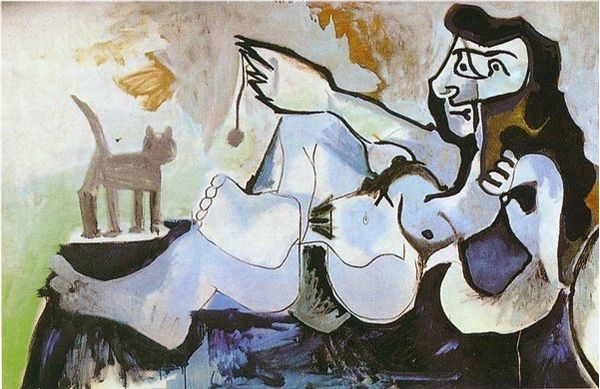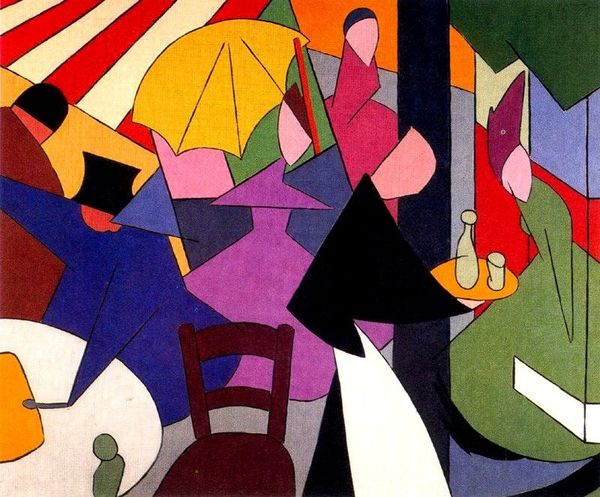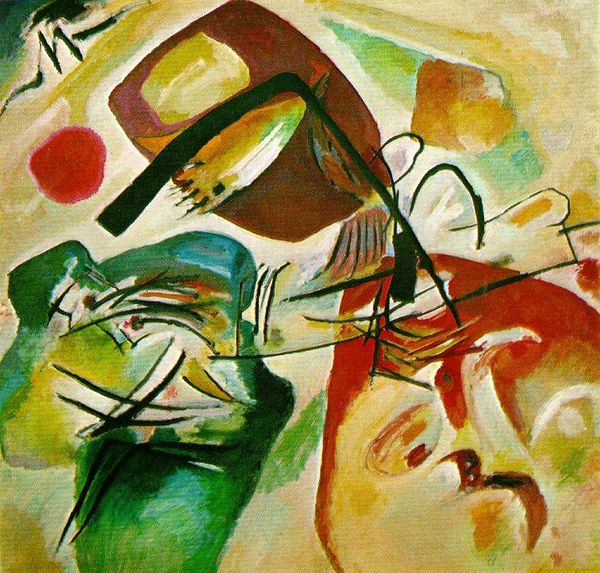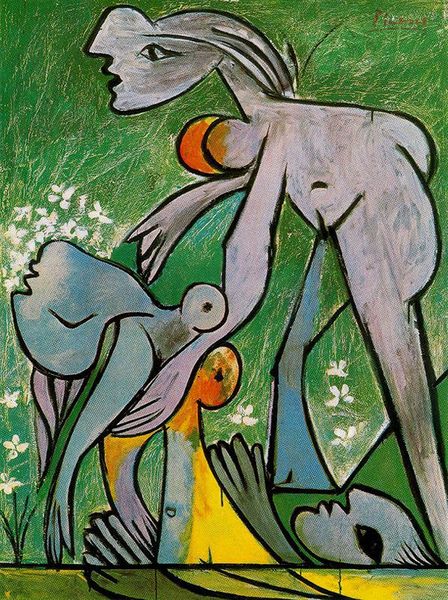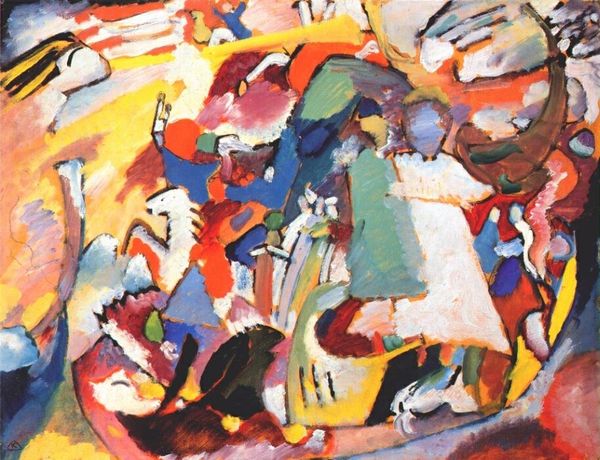
Dimensions: 120 x 250 cm
Copyright: Pablo Picasso,Fair Use
Editor: So, this is Picasso’s “Lust for Life (Pastorale),” painted in 1946, with acrylic paint. I’m struck by how these figures almost feel like ancient frescoes, despite the very modern, geometric style. How do you interpret this scene? Curator: It is fascinating, isn’t it? Consider how Picasso appropriates classical pastoral imagery—traditionally filled with shepherds, nymphs, and idyllic landscapes. Then he reconstructs them through the Cubist lens. Notice how musical instruments recur. Music is a symbol that marks harmony but also ecstasy. What impact do you feel this has on the viewer? Editor: It gives a celebratory feel, almost Dionysian with those goat-like creatures. There's a sense of freedom, but also a kind of deliberate crudeness. Curator: Precisely. Picasso taps into archetypes: the satyr, the flute player, figures of revelry. These were used in the ancient Mediterranean to invoke the divine through music, dance and altered states. Now think, what’s the psychological impact when this ‘primitive’ imagery is coupled with geometric abstraction? Editor: It is thought-provoking, almost contradictory… pushing you to interpret the familiar in entirely new ways. There’s a real sense of breaking away from traditional artistic symbols. Curator: Exactly! By simplifying and fracturing form, Picasso offers us not just a visual representation, but an emotional and psychological landscape to traverse. This continuity of symbols echoes through time, always being reshaped. Editor: I hadn’t thought about that deeper link to ancient imagery – now it gives the work a whole new resonance. Curator: Seeing those symbols in his work differently changes how you see later works too. It shows a clear legacy of the history of painting through today!
Comments
No comments
Be the first to comment and join the conversation on the ultimate creative platform.

